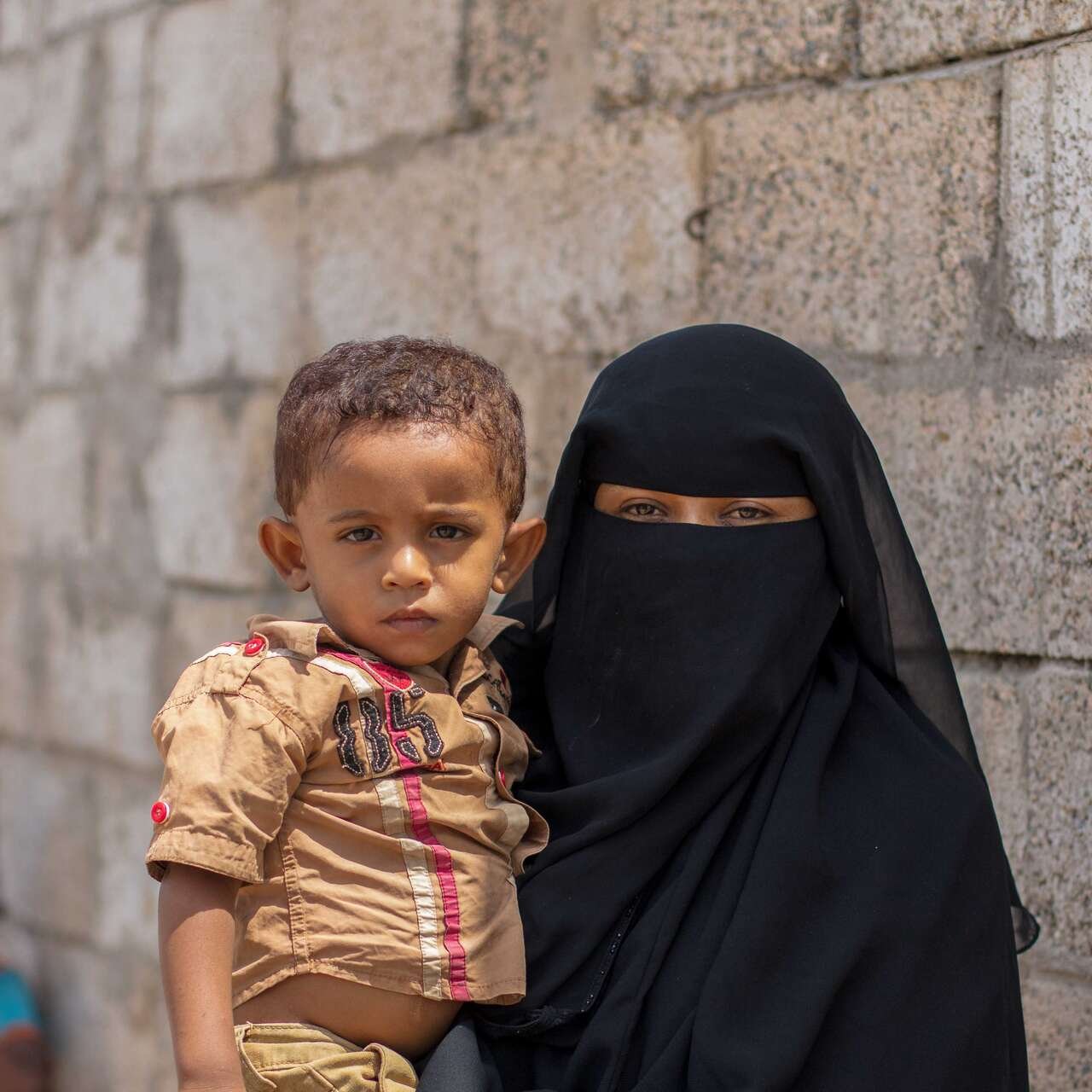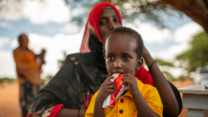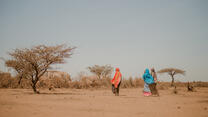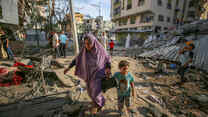IRC launches emergency response as flash floods affect over 100,000 people
- Torrential rains triggered flash floods that destroyed homes—including camps for displaced families—and left farmlands submerged.
- Communities are cut off from essential services with roads, power lines and water and sanitation facilities severely damaged.
- “Southern Yemen is already in the grips of a severe food crisis and these floods have further deepened the emergency,” explains Isaiah Ogolla, the IRC’s Acting Country Director in Yemen.
- IRC teams are delivering cash assistance, essential supplies such as mattresses, blankets and cooking utensils, and hygiene kits to families affected by the floods, and continue to provide support to those affected by rising food insecurity.
Country facts
- Population: 40 million
- People internally displaced by crisis: 4.8 million
- Rank in Human Development Index: 184 of 193
- In 2025, an estimated 19.5 million people across Yemen need humanitarian assistance and protection services
IRC response
- Started work in Yemen: 2012
- People assisted in 2024: 1.8 million
Humanitarian needs in Yemen remain elevated due to protracted conflict, economic crisis and displacement. The IRC provides essential services, such as health, nutrition, water, livelihood and protection programs.
Yemeni communities have endured more than a decade of war. Prolonged conflict, economic collapse and the breakdown of basic services have pushed humanitarian needs to crisis levels. Over two-thirds of the population, nearly 20 million people, require urgent humanitarian assistance. Climate shocks, including recurrent droughts and floods, continue to drive displacement and worsen living conditions.
Yemen’s healthcare system is on the brink of collapse, with more than half of health facilities either closed or functioning at limited capacity. Many hospitals have been damaged in the ongoing conflict, while severe shortages of medicines and qualified health workers limit access to essential care. Outbreaks of cholera, pneumonia, and diphtheria contribute to drive high child mortality rates.
Yemen is also one of the most food-insecure countries in the world. More than one million pregnant or breastfeeding women and over two million children under five require treatment for acute malnutrition. Without immediate intervention, these numbers are expected to rise.
Funding cuts in 2025 have deepened the crisis. With humanitarian assistance dwindling, access to essential food and livelihood support is collapsing, leaving millions—especially women and children—at risk.
Protection risks are increasing as programs that supported survivors of exploitation, violence, forced labor and abuse have been shuttered amidst funding cuts. Women, children, and people with disabilities are particularly vulnerable. The child protection system remains under-resourced and unable to meet the needs of separated and at-risk children.
Political instability and an economic crisis further compound the crisis. A record devaluation of the Yemeni Rial has spurred inflation, eroded household purchasing power, and worsened access to food and services. Meanwhile, restrictions on aid organizations have made it increasingly difficult to deliver the services that many Yemeni communities urgently need.
Despite these challenges, the IRC continues to deliver lifesaving support in Yemen
The IRC’s mission is to help people whose lives and livelihoods are shattered by conflict and disaster to survive, recover and gain control of their future.
The IRC has been working in Yemen since 2012 and rapidly scaled our programming in 2015 to address escalating humanitarian crises sparked by conflict. While the ongoing violence and restrictions on humanitarian actors present operational challenges, the IRC’s 140 person staff and 560 paid incentive workers & volunteers in Yemen continue to support affected populations through the provision of critical emergency response, healthcare, nutrition, economic resiliency, child protection, and women’s protection and empowerment.
Donate: Make a tax-deductible donation to support the IRC. We are on the ground saving children and families from malnutrition and life-threatening diseases. Your gift will help us as we work to save lives in Yemen and in countries around the world.




